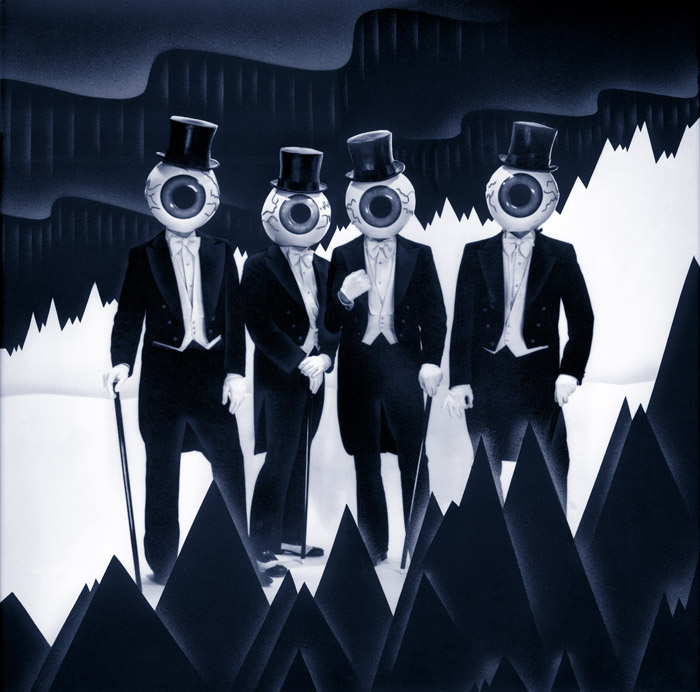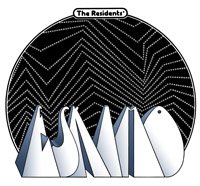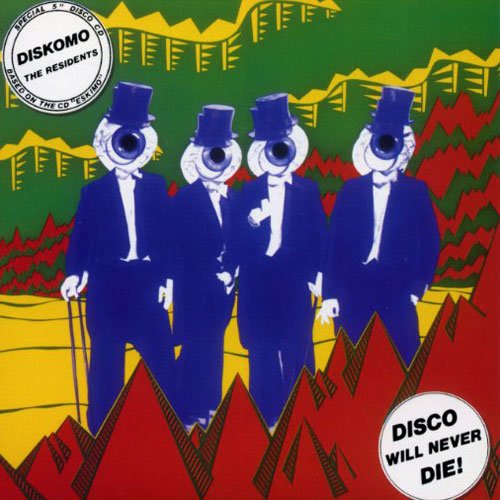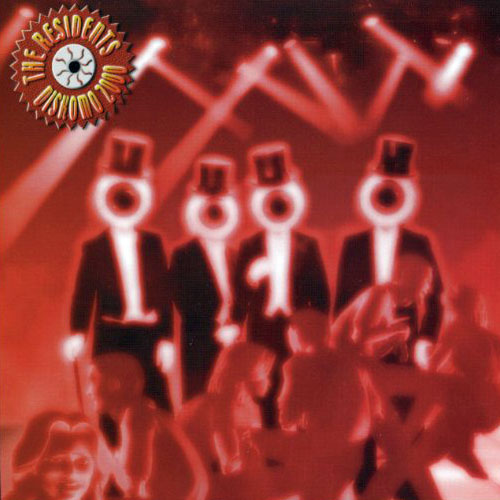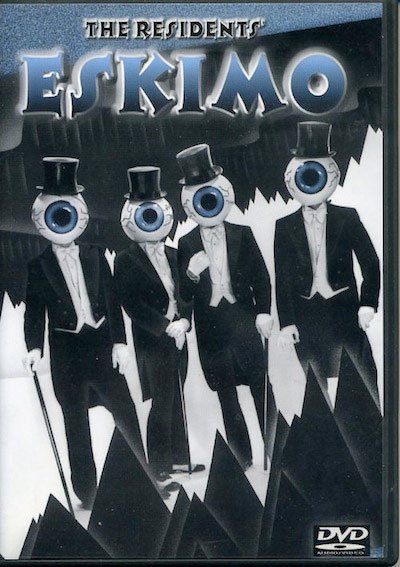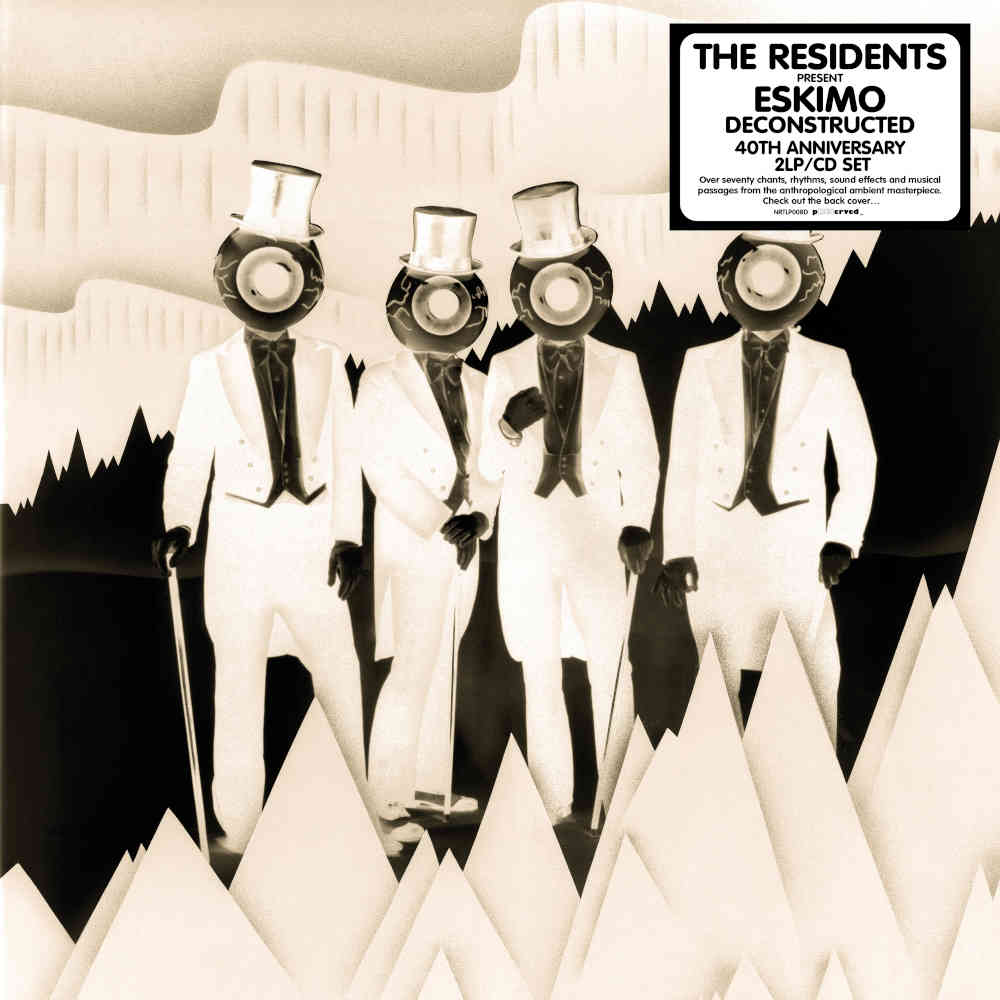Eskimo(1979)OverviewTracksLiner NotesStoriesEskimo Facts
In 1979 "punk" music was all the rage. The Residents had gone though the punk stage three years earlier with the release of "Satisfaction" and were ready for anything that was not punk.
They decided it was a good time to make the jump into world music, since by their own calculations it would not become popular for several more years. They scanned the map for a proper culture to exploit and, not finding one, became discouraged until seeing a large Coke sign featuring Santa Claus. Immediately they realized they had overlooked the North Pole because it is made of ice and therefore didn't exist on their world map.
Immediately rushing out to a library, they gathered all the information they could find on Eskimos. What they found was a government-issued book on Eskimo sanitation, a book of Eskimo legends, and one scratchy record of someone hitting a drum and chanting. Not exactly the rich cultural vein they had hoped to mine.
But it was enough, for it set the Eyeballs spinning off into their own imaginary world of six-month nights, marimbas made of frozen fish, and Eskimo sex lives. For almost four years the ideas tumbled around. Sometimes they would feel elated at some new breakthrough, but usually they moaned that the album would not only make dreary listening, but be pretentious beyond belief.
But when it was finally released ESKIMO was a hit, both in sales and in reviews. Andy Gill of New Music Express said, "I'm not sure quite how to convey the magnitude of The Residents' achievement with Eskimo. What I am sure of is that it's without doubt one of the most important albums ever made, if not the most important, and that its implications are of such an unprecedentedly revolutionary nature that the weak-minded polemical posturing of purportedly 'political' bands are positively bourgeois by comparison."
He says this because the album tells the story, without relying upon words, of the assimilation of a ritualistic society into consumer culture. This story unfolds as Eskimo fables, a lived experience, set to the grinding of sound effects and music. It is a mind movie rich with detail. ESKIMO is, quite literally, a unique experience.
- The Walrus Hunt
- Birth
- Arctic Hysteria
- The Angry Angakok
- A Spirit Steals a Child
- The Festival of Death
The 2019 pREServed edition includes the following bonus tracks:
- Eskimo (1978 Demo)
- Eskimo Acapella Suite
- Kenya
- Middle East Dance (from ICE2)
- Scottish Rhapsody
- Diskomo (Demo)
- Diskomo
- Disaster
- Plants
- Farmers
- Twinkle
- Heart in SF
- I Left My Heart In San Francisco
- Dumbo The Clown (Who Loved Christmas)
- Is He Really Bringing Roses?
- Time's Up
- The Sleeper (Extended Intro)
- Eskimo Suite (1982 Rehearsal)
- Diskomo (1982 Rehearsal)
- Festival of Death (Live 1986)
- Diskomo (Live in San Francisco 1987)
- Eskimo Opera Proposal
Created over a period of three years (work began shortly after The Third Reich 'N' Roll was released), Eskimo was unlike anything anyone had heard before. Instead of an album made up of songs, The Residents produced a series of acoustic landscapes: each track is the sound of a story taking place, rather than the traditional song telling a story. The idea for the album is supposed to have come from the band's former collaborator, the Mysterious N. Senada, who had disappeared in the early 70s to search for music among the Eskimos (legend has it that he re-appeared during the making of the album with a tape of sound samples and a jar of arctic air to record). The Residents teamed up with drummer Chris Cutler and Don Preston (formerly a keyboard player for Frank Zappa's Mothers of Invention), as well as their regular collaborator, Snakefinger. Inspired by such pieces of pop culture as the famous Santa Claus Coca-Cola ads, The Residents set about inventing an anthropological background for their Eskimos which didn't bear much resemblance to reality, but instead was based on pop perceptions of the northern peoples (nevertheless, the USSR release was classified as a "cultural documentary"). Each track relates a story which was told in writing on the inside of the album's gatefold cover. The stories are progressively more complex and dig deeper into the fictional Eskimo culture, starting with a simple Walrus Hunt and ending with a confrontation with the spirit world and a Festival of Death celebrating the end of the six-month night.
The album shows, as did the mini-ballet Six Things to a Cycle on Fingerprince, the influence of Harry Partch. Like Partch, The Residents invented their own language and instruments. Most of the fake Eskimo tongue is made up of highly distorted English and is sung while breathing in to give it an alien texture. As the album progresses you can hear the slow invasion of American culture into the Eskimo lives as the Eskimo's spiritual leader, the Angakok, leads them in chants whose nonsense language becomes corrupted with phrases such as "Coca-Cola Adds Life".
Eskimo almost didn't happen. When Duck Stab turned into a big success, the Cryptic Corporation started to promote it heavily. The Residents became worried that the business may have been moving too quickly -- not to mention the possibility that the promotions might endanger their anonymity. The Residents were already somewhat afraid that Eskimo might turn out to be dull and pretentious so they grabbed master tapes and disappeared. Desperate for some material to release (the band disappeared the day before the tapes were to go to pressing), the Cryptics pulled an old master tape off of the shelves and released that instead. It was an unnamed album which was never meant to be released, dubbed Not Available by the Corporation.
It turned out that the group had flown to England and left the tapes with Chris Cutler. John Kennedy and Jay Clem of the Cryptic Corporation flew over to collect the tapes, which Cutler had been keeping at the National Safe Deposit Box Company in London. The New Wave press, which had become rather caught up in The Residents after Duck Stab, were quite keen on the whole "disappearing Residents" story, so the Corporation milked the event for its publicity value, playing up the mystery of The Residents' disappearance and releasing press photos of the tape exchange.
The Residents themselves weren't in England. They had apparently gone on to Japan, then reappeared in San Francisco shortly after the tapes were recovered. On their return, the Cryptic Corporation presented them with a new 16-track recording studio as an apology for the misunderstanding. To celebrate the reunion, the band used their new toy to recorded Santa Dog '78, which, along with the original Santa Dog was given away free as a single to everyone on the Ralph Records mailing list as a Christmas gift in a package which included the story of the disappearance.
When it finally did come out, Eskimo had one other eye-catching feature: it had the first cover featuring the Residents' newest costumes, the Eyeball heads. Originally the band had wanted silver spheres reflecting the arctic mists, but that idea proved impractical. The eye-heads, second choices though they were, turned out to be a powerful image: the costumes were so incredibly identifiable that they became the trademark look for the band. In spite of The Residents' fears about possible pretentiousness, Eskimo was a huge critical success. The music press in the UK loved it, hailing it as a huge milestone in the new music. Sales were phenomenal for an independent, underground album. The first pressing of 10,000 copies on snow-white vinyl sold out quickly. The adulation was so strong, in fact, that the band was afraid that their Eyeball-heads might get swollen from all the praise. To forestall this the band spoofed their own albums by creating a disco version called Diskomo. Released as a single, this instrumental work has gone through a number of revisions over its history.
Expand allThe Walrus Hunt
Walrus hunting in kayaks among the floating ice must sometime proceed in the winter darkness or in a condition known as "whiteout" when atmospheric conditions turn the sky into a virtual mirror of the snow and ice below and orientation becomes difficult. At these times, women on shore blow a large horn made from a giant narwhal's hollowed tusk and chant to give directional orientation to the hunters.
Winter had almost arrived, for the wind had a more pronounced bite in its insistence. The noonday sun sat momentarily on the horizon before hastening back into the icy waters. Floating on the rising winds, the sounds of the narwhal horn and chanting combined to give assurance to the Eskimo hunters. The paddling of the kayak was smooth and steady. Not much light was left and a sleeping walrus could easily hide in the deep shadowed recesses of the floating icebergs.
But wait! There, on the ice... yes, a walrus! A happy but silent discovery. The sling-like harpoon was removed from its leather container and spun rapidly around over the hunter's head until sufficient speed was reached to send it zooming toward its unsuspecting prey. The walrus was hit. Cheers rang out from the men as they all paddled toward the animal which had plunged into the icy sea; but the water offered no protection as the Eskimo men reached for their whale bone clubs and bludgeoned the creature. The walrus floated quietly in the water and the kayaks moved on in search of other sleeping prey.
Birth
Since the most important person in the Eskimo community is the hunter, and since hunters are always male, female infants are ritually killed if there is no infant male who will someday need a mate to cook, sew, and chew leather for him. This social condition adds to the drama of birth.
The pains were coming in regular intervals and she knew that if she didn't start moving now, her legs might collapse under her before she could reach the ice cave. The ceremonial band was already playing birth music and the other women sang in an attempt to comfort her. But as her steps carried her toward the ice cave and the ceremonial band's music became lost in the wind. the true loneliness of her situation loomed even larger in her mind. The gaping mouth of the ice cave eagerly awaited. And although she felt fear, she knew the cave also offered relief from her quickening pains, for this journey had been made many times before.
Her pace remained unchanged as she entered the cave, which now enlarged before her and engulfed her in the sweet music of slowly moving ice vibrating within its own crystalline formations. Deeper into the cave she went. The men were playing the koa and chanting for the birth of a male.
Finally she reached the furthest chamber where stood the Angakok. Delivery began immediately as the magic man filled the room with protective prayers. The child was born. The Eskimo woman reached forth with her hand, gently across the already frozen crust on the infant's belly to feel the child's sex; the other women came into the chamber singing the song of life and bore the infant away.
Arctic Hysteria
Arctic hysteria is a phenomenon that occurs in the dead of winter, primarily to women. The weeks of darkness and general sensory deprivation lead to the eventual temporary loss of a firm touch with reality.
Darkness prevailed everywhere. Beside her igloo, a woman sat in the wind singing softly to herself while beating the snow from her husband's seal fur clothing. Her voice and mind drifted with the soft tones of the nearby koa player. Her song was about her work, but her unfocused eyes revealed a growing distance. The darkness seemed to confine her, and the singing voice seemed not to be her own.
The realization struck! "I am dead, or at least the others believe I am", she thought. Already she hears the pounding of the tribe's hands packing down the snow on her icy grave as they sing their song of farewell. The rhythm of death sounds in her ears.
She felt cold no more as her worst fears were realized. She had been sent to the "Land of the Crestfallen", where only the spirits of poor hunters and badly tattooed women spent eternity snapping at butterflies. But wait! Even worse! Instead of butterflies, the dreaded Arctic locust swarmed into the evening air devouring all in their path.
The men in the tribe had become aware of the woman's hysterical suffering and joined in a circle to sing a chant of releasement. "Chukaroq, chukaroq, chukaroq, ei", they sang, until finally the woman once again returned to beating the snow mindlessly from her husband's clothing, virtually unaware of what had happened as her song of work faded into the wind.
The Angry Angakok
Angakoks, the Eskimo men of magic. are widely held as symbols of mortal power among the tribe, Stories of their feats are very popular at tribal gatherings.
The whales whistled as the Eskimo tribe danced on and on to the lively beat of the ceremonial band. For twenty days they danced. And sang. And prayed. And still the ice floe hugged the shore line preventing the Eskimos from being able to kill their most valuable prey, the large migrating whale. Anger had been building in the people towards the Angakok who allegedly had the power to remove the ice that was blocking their passage. Finally a hunter challenged the magic of the Angakok with hostile words, and others soon joined him in the traditional taunt of "necki, necki, necki", until the Angakok rose up before them and silenced them with a single cry. A spell escaped from his lips and the sky darkened. A curse slipped from his finger and the seas swelled. The ice was cracking at last. But that dull roar? The Eskimos looked at one another with fear in their weathered faces. Then it appeared. A "giant snake which stands on the water" wiggled before them with its head in the clouds. They briefly watched it eat a path through the ice floe, then hysterically ran for safety. But the water spout had one more job to do. The hunter who challenged the Angakok's magic was never seen again.
A Spirit Steals a Child
One of the many strange Eskimo phenomena is the disappearance of children. In such inclement conditions one can easily understand how this can happen. However, Eskimo mythology speaks of children being stolen by the spirit of the weeping seal, which is half seal and half woman, and who, because she can have no children, must steal any she finds unguarded.
Pop! the bladders went. Hunting season had been good and there were many bladders to burst. The band played gleefully, eager to get to the next peak in the music so all could explore the inflated bladders the creatures which had fed and clothed the Eskimos all year. Finally, the music ended and everyone immediately ran toward the sea, eager to throw the burst bladders through a hole in the ice so the souls of the animals could return to the sea and be caught again next year.
Because of the excitement, an important Eskimo rule has been broken. A child was left unattended. Tears froze on his cheeks as he stood crying behind an igloo. Suddenly, there was another sound in the wind. A whistle, a bark, a growling whine filled the air around the terrified child, whirling him around in a flurry of ice.
The Eskimo soon returned to discover that the child was missing, and realized the folly of their over-excitement at the bladder festival. The Angakok started a chant to halt the fleeing spirit, but he knew the chant would only delay the spirit of the Weeping Seal's complete takeover of the child. They would have to go to "the world beneath the world" and fight.
Several dog sleds sped away across the tundra, whips cracking at the barking dogs. On the lead sled the child's father and the Angakok crouched, defending themselves against the blast of Arctic wind. The ride was long and tiring.
As they neared their destination, the men sang a chant and the Angakok spoke a spell. A dog which was brought before him was decapitated, and the head, still containing the dog spirit, was quickly taken down to the netherworld, while the other dogs, smelling the blood of their own kind, howled into the cold night. The Angakok raised the dog head into the air and called forth its spirit to battle the Weeping Seal and force it to return the stolen child.
The two spirits met and intertwined in the air. With the Northern Lights they danced and sang, and then they disappeared slowly as the men returned to their village in hopes that the child would be there.
The Festival of Death
Perhaps no holiday is more important to the Eskimo than the Death Festival. More than a tribute to the dead, this festival marks the beginning of the yearly cycle by being held at the end of the six month Eskimo night.
Something moved in the dark. A face as tall as a man -- a big, round,evil face wandered at random. More faces and the realization: the dead walk the snow. Whistling and chanting, "We have stolen the sun and you will have to live in darkness".
But the women of the tribe, who were hiding in their igloos, then rushed out shrieking and beating their chests, proclaiming their right as the source of life. The dead spirits were frightened by the women and fled into the darkness. As the Eskimo band picked up their song, the women gathered in a circle, symbolizing nature's golden orb, and sang a hymn asking the dead to return the sun to the mothers of the snow.
The men, having removed their "dead spirit" masks, joined the women in festive songs and hand-clapping games until, at last, the first rays of sunlight of the Eskimo year began to appear over the horizon, signaling the end of six months of winter darkness. Gratefully, the dead had released their hold once more.
Epilogue
All the stories on this recording are expressed in the past tense,This is because the Eskimo, particularly the Polar Eskimo on which this album is based, was "rescued" from its "miserable" life style by welfare in the late sixties. The Polar Eskimo has been relocated entirely into government housing, and now spends most of the day watching reruns on TV.
Miscellaneous Eskimo Information of Interest
- If a good hunter dies, the other men cut him up and rub the pieces on their spearheads to improve their aim.
- When a person dies, his name is not spoken until it can be given to a newly born child, or favorite dog.
- There is no theft, but murder is common.
- If an Angakok is murdered, in order to protect himself from its spirit, the murderer cuts off the Angakok's toes and fingers and puts them in the dead man's mouth.
- Some newborn infants are killed secretly, dried out, and placed inside a bag which is worn by a person or stuffed into a kayak nose. This is said to improve hunting.
- Dead children are buried with a dog's head to protect the child in the afterlife.
- A menstruating woman is not allowed to go outside without first bathing in the urine of a child.
- Due to the shortage or water (snow must be melted) bathing is done with urine.
- Eskimos have words for 40 varieties of snow.
- Women cannot go out in moonlight. Eskimos believe the moon is male and will impregnate women.
- Sharing of a wife is a sign of friendship.
- If catastrophe is imminent, all in the settlement exchange wives in order to confuse the evil spirits.
- Eskimos only eat meat, including rotten walrus which is said to taste like cheese.
- Putrefied seal is a delicacy.
An Old Eskimo Proverb:
Iglupse igalangit taimak miktigvut sekinerub issagutingit iterungnangimatta iglonut.
Translation: Don't let the windows of your house be so small that the light of the sun cannot enter your rooms.
Instrumentation of the ceremonial band:
- Kooa - a plucked string instrument made of seal gut stretched over a dog skull sounding board.
- Pooeye - a three to five note flute made from hollowed whale or walrus bone.
Sedrak- a tuned percussive instrument made of walrus and whale ribs which are struck with bones of frozen fish. - Segook, Annorak, Ooluksak, Atseak, others - drums of various types all made by stretching skins over skulls, rib cages, etc.
- The Eskimo scale has give notes (approx. F, G, B flat, D flat, E flat).

